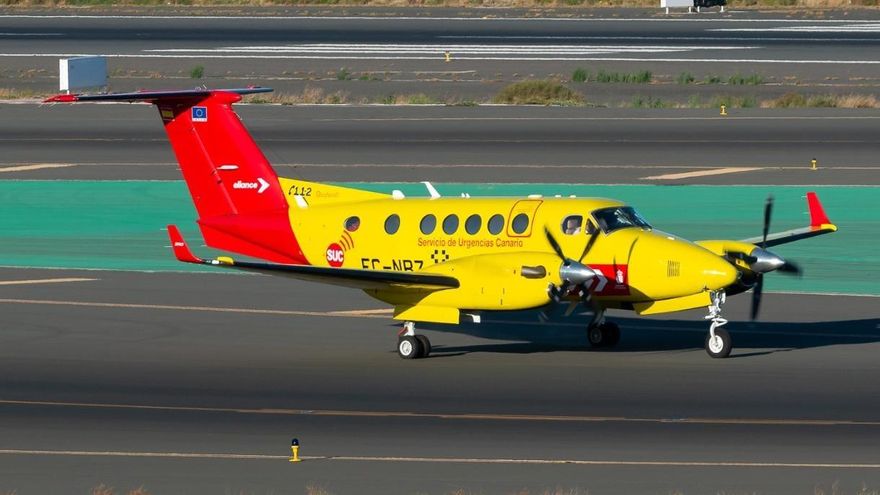
A malfunction has compromised the operational capability of the Canarian emergency service aircraft. According to the Company for the Management of Health and Safety Services in the Canary Islands (GSC Canarias), the autonomous government entity responsible for air and ground health transport, the aircraft is experiencing an issue with the fan that powers one of the three screens, preventing it from regulating temperature. This explains the incident that occurred on Tuesday, April 22, which rendered the aircraft inoperative.
On that day, a team of medics had transported a patient from El Hierro to Tenerife Sur. Once the procedure was completed, they prepared to return to Gran Canaria airport, the aircraft’s primary base. However, just five minutes after take-off, the crew heard unusual noises coming from the cabin and detected the scent of “burnt cable,” necessitating an emergency landing.
As reported by the SUC on April 25, the professionals conducted a thorough inspection but found no anomalies. To confirm the aircraft’s proper functionality, a test flight to Gran Canaria was scheduled at approximately 4:30 p.m. on Wednesday, April 23, and concluded without issues, although one tyre was replaced due to damage incurred during the emergency landing.
“Aircraft”
“Ultimately, last Monday, the issue was identified after a pilot noted the monitor malfunction and declined to fly under those conditions,” stated representatives of the workers. Accordingly, the aircraft remained non-operational until Friday. On that day, Eliance, the company responsible for the aircraft, communicated to the Canary GSC Committee that the plane was now operational.
Nevertheless, the SUC assured on Monday that the aircraft would be functional from 6:30 p.m. on April 30. “On May 1, a public holiday throughout the country, this service will be staffed with local personnel for emergency situations. On Friday, the medicalised aircraft completed the only three pending medical transfers, all between islands and none to or from the mainland,” the same sources remarked.
The specifics of the failure have not been elaborated upon. “The public company GSC Canarias, which operates the SUC, has requested a report from the service provider detailing the problem encountered and its resolution,” they concluded.
Six-day Margin
The committee indicated that the aircraft can resume flights since the Minimum Equipment List (MEL) approved by the State Air Security Agency (AESA) allows for a six-day timeframe to address this failure. We must wait until the deadline to determine whether the aircraft, which facilitates urgent medical transport of patients from the archipelago to the mainland and inter-island hospital transfers, will be grounded again.
Additionally, the lack of “personnel available to conduct night flights” remains a concern, as this situation emerged last week following the retirement of one of the pilots.
“The aircraft operates from Monday to Friday between 9 a.m. and 9 p.m., but it is contracted to function every day of the year for 24 hours should an emergency arise. Until now, one person was stationed overnight, but currently, the three remaining pilots in the team only work during the day due to a staffing shortage – two are required for each flight,” detailed the members.
The SUC aircraft can accommodate three patients simultaneously and typically undertakes an average of two trips per week to the mainland. On inter-island journeys, the daily average ranges from seven to eight flights.
Regarding helicopters – of which there are two, one in Gran Canaria and one in Tenerife – they make an average of one to two transfers in situ during the week and two to three over weekends. These vehicles, operated by the Avincis company, are equipped with one stretcher and function 24 hours a day, every day of the year.
















